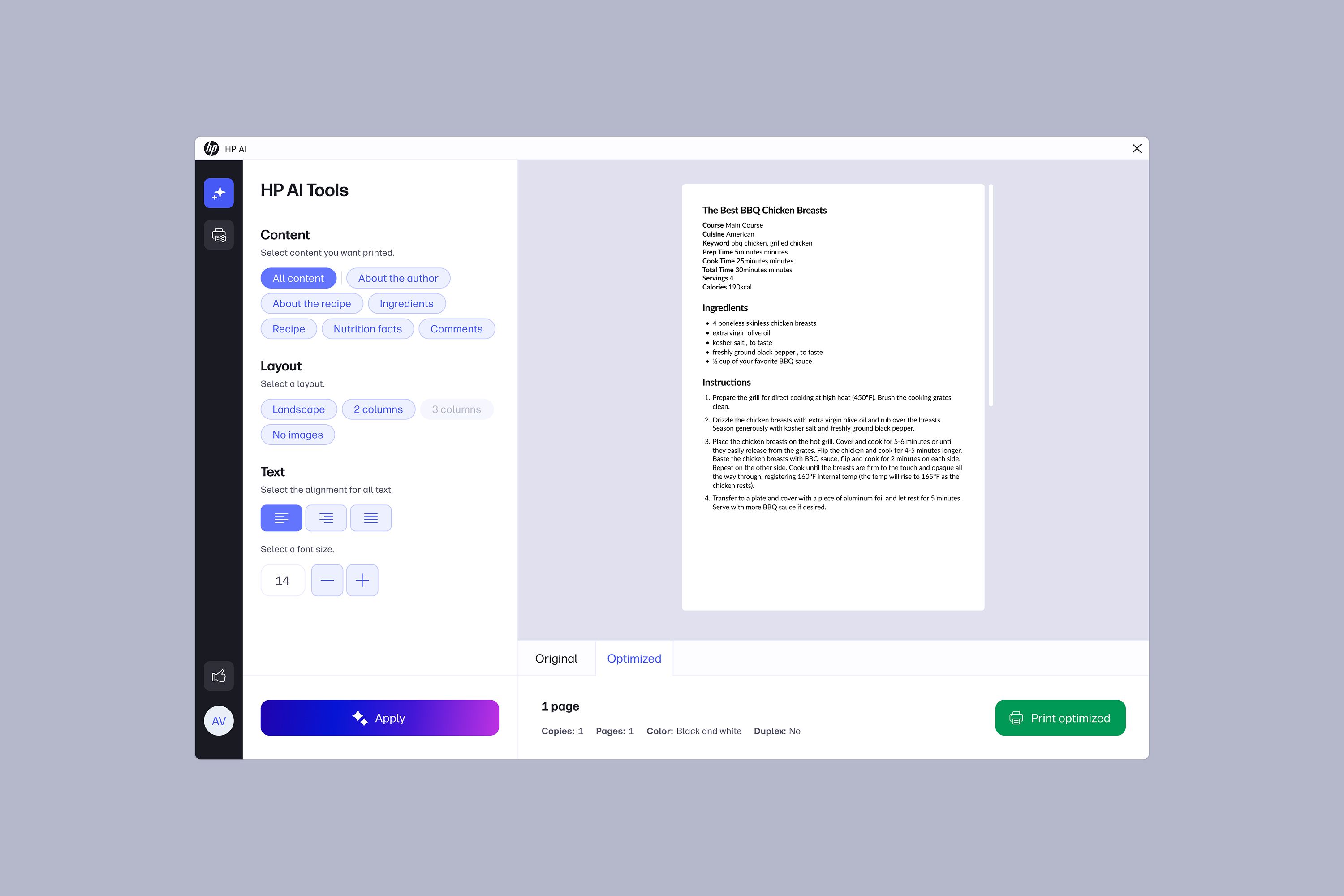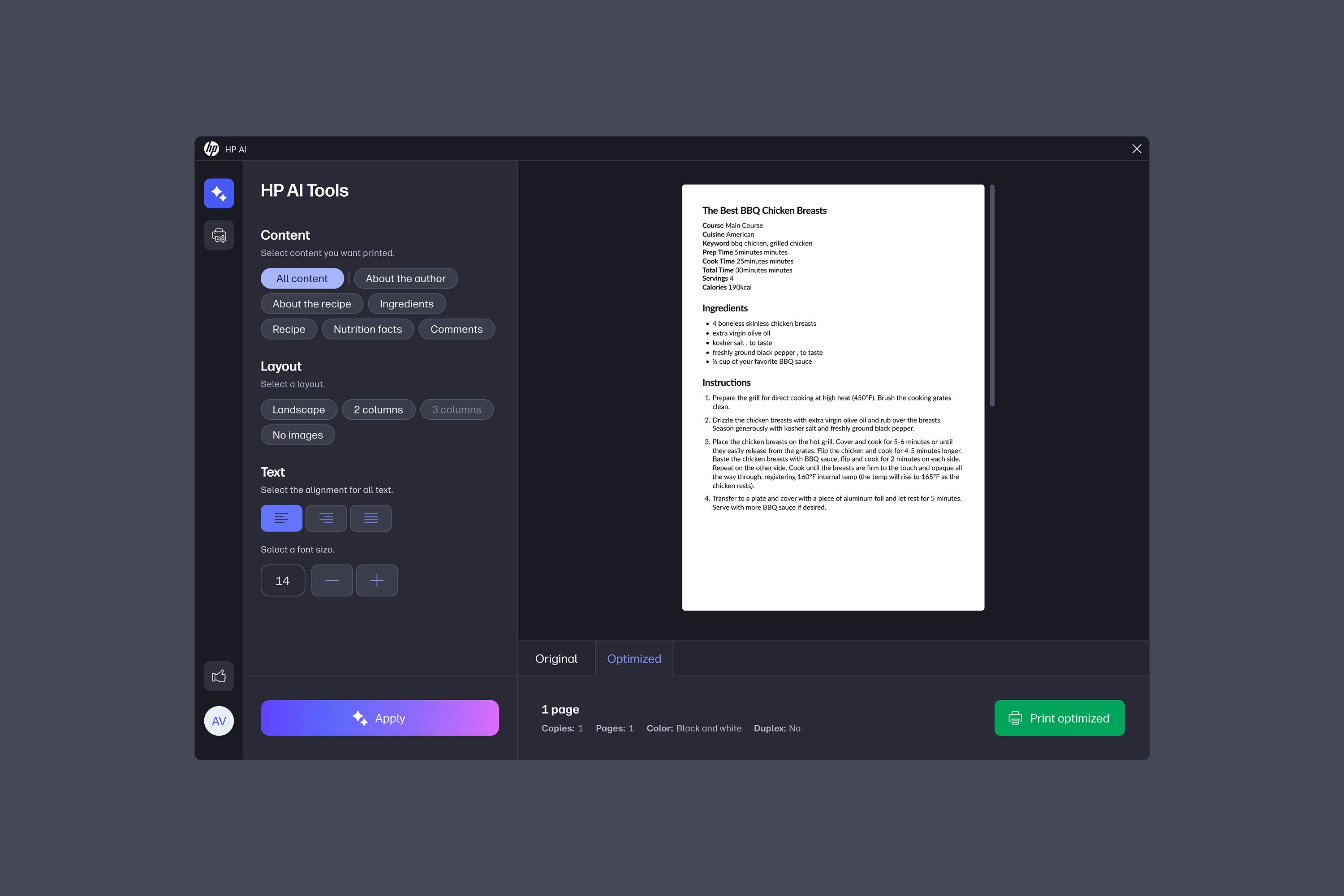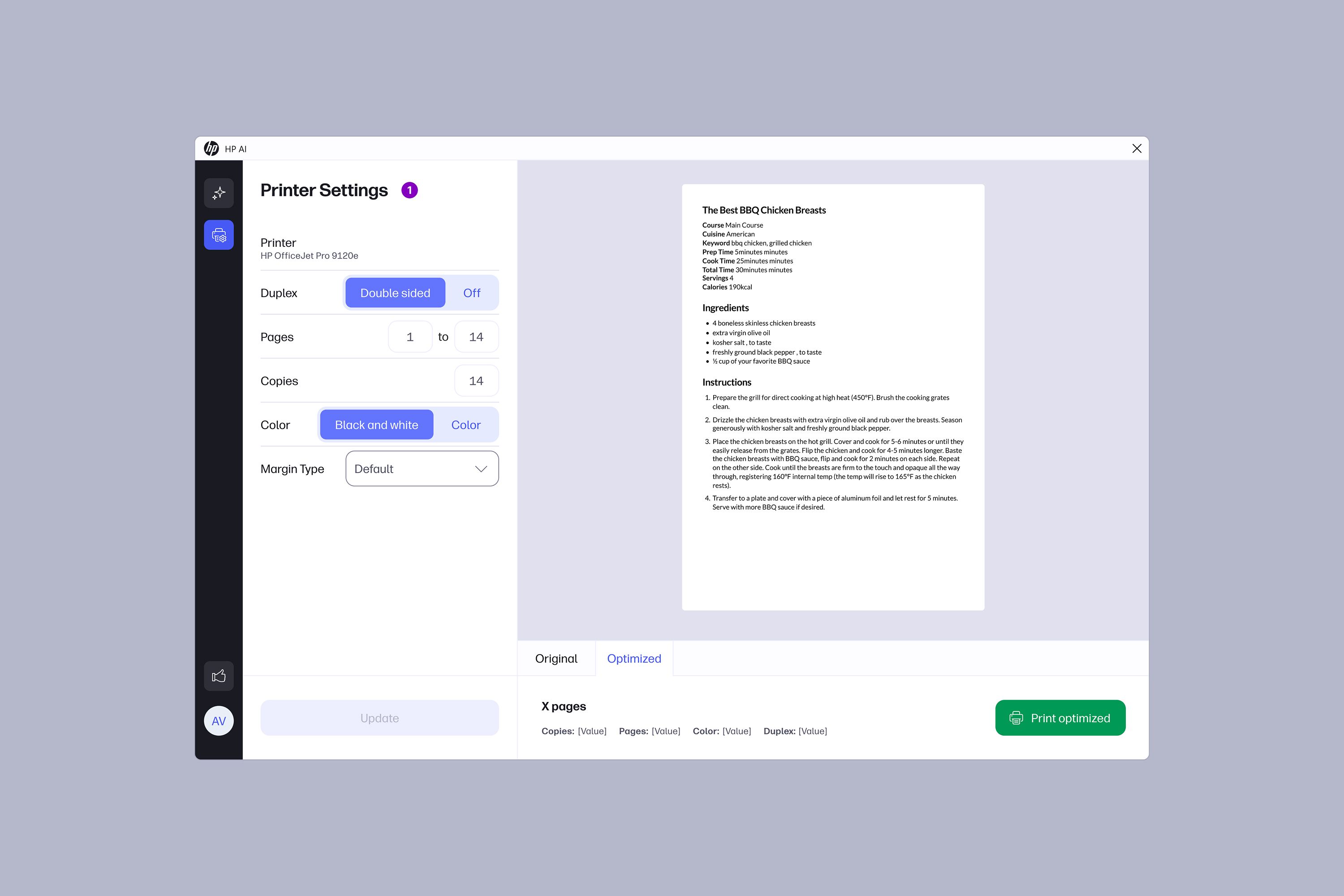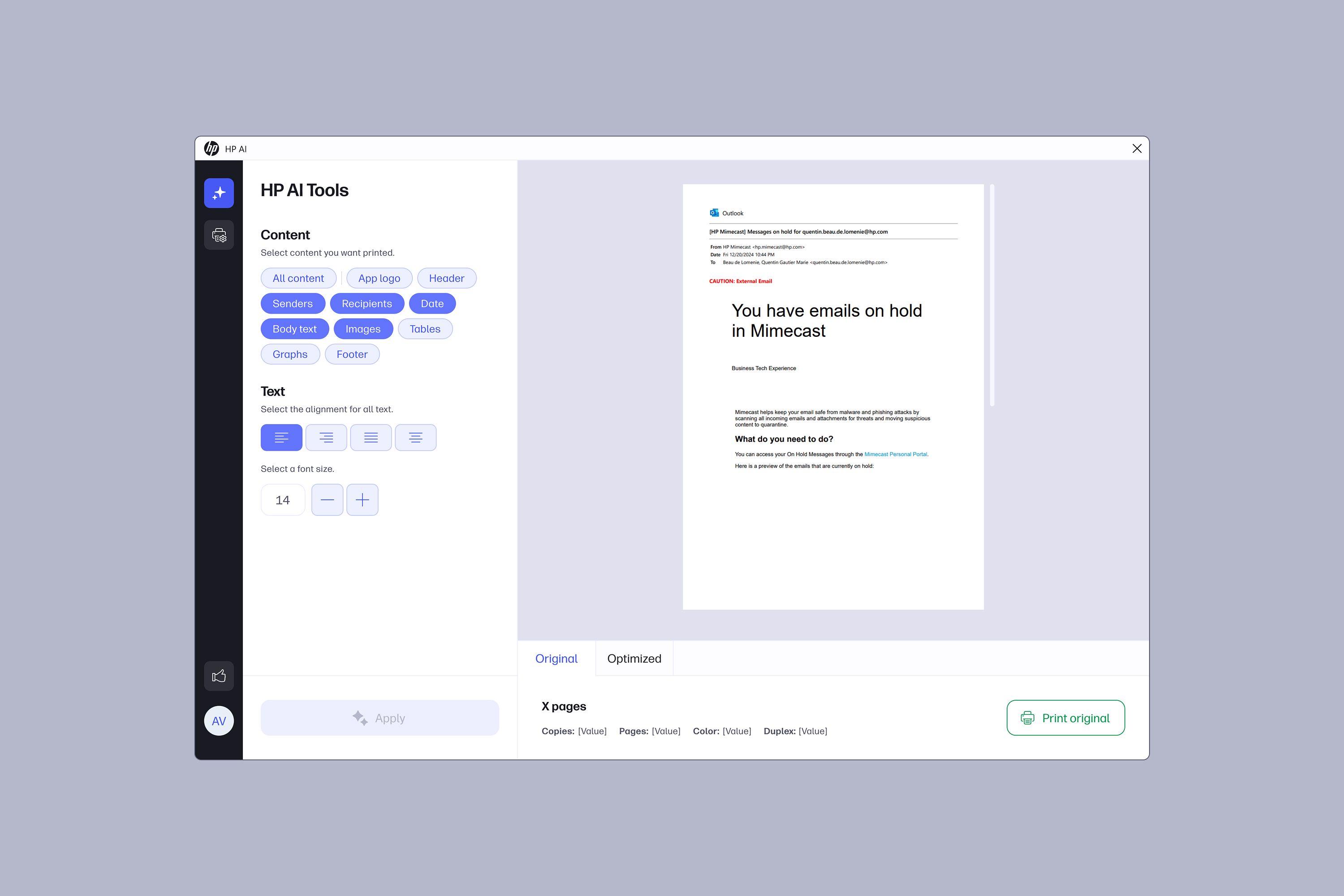
Designers
Quentin Gautier Marie Beau de Lomenie, Michael Peters, Cameron Palmer, Godwin Joseph, Bharati Dixit, Cecily Jones, Adolfredo Sembergman, Jason Wang, Judy Cheng, Gaurav Agrawal and Pete Hwang
Year
2025
Category
Product
Country
United States
Design Studio / Department
Global Experience Design
»Printing from the web has long been a frustrating experience, involving cluttered pages, wasted paper, and orphaned lines. HP AI Print quietly fixes all of that. Using AI in a smart way, it removes irrelevant content, optimizes the layout, and delivers clean, readable results. It’s simple, free, and feels like the way printing should always have worked. HP AI Print is thoughtfully designed and rooted in user needs. It saves time, reduces waste, and demonstrates that even small, overlooked problems deserve smart solutions. HP AI Print is human-centered technology at its best - subtle, effective, and genuinely helpful.«
UX Design Awards Jury 2025 Autumn

Three questions to the project team
What was the particular challenge of the project from a UX point of view?
Through research with over 1,500 users, we found that almost no one expected AI to improve printing. There were no established mental models, and no similar experiences to draw inspiration from. Our challenge was to design an AI printing experience in a space where nothing existed, kind of a designer's dream. We had to understand our users, define and test multiple rounds of interactions, and ensure technical feasibility. This required a constant focus on keeping the experience simple, useful, and trustworthy. In the end, we were not just solving problems — we were setting the standard.
What was your personal highlight in the development process? Was there an aha!-moment, was there a low point?
We believed a chatbot was essential to any AI-powered tool, so we designed one alongside a visual interface. During testing, a clear pattern emerged: users preferred the visual UI. It was faster, more intuitive, and better suited to the task. The chatbot added friction rather than value. This was a key Aha! moment. It challenged our assumptions and led us to remove the chatbot from the initial release. We focused entirely on refining the visual experience, with plans to bring back chat only when it can clearly do more than the interface alone.
Where do you see yourself and the project in the next five years?
Imagine a future where printing is anticipatory, effortless, and indispensable—not a mechanical task, but a seamless, intelligent experience. AI becomes the invisible orchestrator behind every print. In five years, this innovation will transcend the traditional 'File > Print' flow, evolving to predict, adapt, and understand not just what you print, but why. It will deliver flawless output, anticipate user intent, and optimize for security, efficiency, and sustainability. HP AI for print won’t be a feature—it will be the standard, powered by real-time learning and a digital-physical feedback loop that ensures every print is not just accurate, but intelligent.


